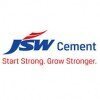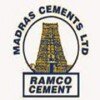
i
UltraTech
Cement
Proud winner of ABECA 2025 - AmbitionBox Employee Choice Awards
Filter interviews by
UltraTech Cement Process Engineer Interview Questions and Answers
7 Interview questions
Cement manufacturing involves raw material extraction, grinding, blending, heating, and cooling processes to produce clinker and cement.
1. Raw Material Extraction: Limestone and clay are mined and crushed.
2. Grinding: The raw materials are finely ground to a powder.
3. Blending: The ground materials are mixed in specific proportions.
4. Heating: The mixture is heated in a kiln at about 1400-1600°C to form clinker.
5....
Maintaining cement quality involves rigorous testing, proper storage, and adherence to standards throughout production.
Regular testing of raw materials (e.g., limestone, clay) for chemical composition and purity.
Monitoring the grinding process to ensure consistent particle size distribution.
Implementing quality control measures during the mixing process to maintain the correct water-cement ratio.
Conducting strengt...
Vibration in a cement mill can arise from mechanical imbalances, misalignments, or operational issues.
Mechanical imbalances: Uneven wear on grinding media can cause vibrations.
Misalignment: If the mill components are not properly aligned, it can lead to excessive vibrations.
Operational issues: Incorrect feed rates or sudden changes in material properties can induce vibrations.
Bearing wear: Worn bearings can lead t...
The initial parameter in a VRM typically refers to the feed material's characteristics and moisture content.
Feed material size: Typically, the feed should be less than 10 mm for optimal grinding.
Moisture content: High moisture can lead to clumping and affect grinding efficiency.
Material type: Different materials (e.g., clinker, limestone) have varying grindability.
Temperature: Initial temperature of the feed can i...
A Vibration Cement Mill uses mechanical vibrations to enhance grinding efficiency and reduce energy consumption during cement production.
Vibration mills operate by using high-frequency vibrations to agitate the material, improving particle size reduction.
The grinding media, typically steel balls, are set in motion by the vibrations, leading to effective impact and shear forces.
The design includes a cylindrical cha...
Responding to rejected cement involves assessing quality, investigating causes, and implementing corrective actions.
Conduct a thorough quality assessment to identify specific issues with the cement.
Investigate the source of the rejection, such as improper storage or handling.
Implement corrective actions, like adjusting the mixing process or changing suppliers.
Communicate with the supplier to address quality concer...
Flow refers to the movement of materials, energy, or information through a system, crucial for optimizing processes.
Flow can be laminar or turbulent; laminar flow is smooth and orderly, while turbulent flow is chaotic (e.g., water flowing in a pipe).
In manufacturing, flow refers to the movement of materials through production stages, impacting efficiency and lead times.
In process engineering, understanding flow dy...
UltraTech Cement Process Engineer Interview Experiences
9 interviews found
I appeared for an interview in Feb 2025, where I was asked the following questions.
- Q1. What is the concept of flow?
- Ans.
Flow refers to the movement of materials, energy, or information through a system, crucial for optimizing processes.
Flow can be laminar or turbulent; laminar flow is smooth and orderly, while turbulent flow is chaotic (e.g., water flowing in a pipe).
In manufacturing, flow refers to the movement of materials through production stages, impacting efficiency and lead times.
In process engineering, understanding flow dynamic...
- Q2. What is the appearance of the parameter at the beginning in a Vertical Roller Mill (VRM)?
- Ans.
The initial parameter in a VRM typically refers to the feed material's characteristics and moisture content.
Feed material size: Typically, the feed should be less than 10 mm for optimal grinding.
Moisture content: High moisture can lead to clumping and affect grinding efficiency.
Material type: Different materials (e.g., clinker, limestone) have varying grindability.
Temperature: Initial temperature of the feed can influe...
- Q3. What actions can you take in response to rejecting cement?
- Ans.
Responding to rejected cement involves assessing quality, investigating causes, and implementing corrective actions.
Conduct a thorough quality assessment to identify specific issues with the cement.
Investigate the source of the rejection, such as improper storage or handling.
Implement corrective actions, like adjusting the mixing process or changing suppliers.
Communicate with the supplier to address quality concerns an...
- Q4. What is the reason for the upcoming vibration in the cement mill?
- Ans.
Vibration in a cement mill can arise from mechanical imbalances, misalignments, or operational issues.
Mechanical imbalances: Uneven wear on grinding media can cause vibrations.
Misalignment: If the mill components are not properly aligned, it can lead to excessive vibrations.
Operational issues: Incorrect feed rates or sudden changes in material properties can induce vibrations.
Bearing wear: Worn bearings can lead to inc...
- Q5. What is the process involved in the operation of a Vibration Cement Mill?
- Ans.
A Vibration Cement Mill uses mechanical vibrations to enhance grinding efficiency and reduce energy consumption during cement production.
Vibration mills operate by using high-frequency vibrations to agitate the material, improving particle size reduction.
The grinding media, typically steel balls, are set in motion by the vibrations, leading to effective impact and shear forces.
The design includes a cylindrical chamber ...
I appeared for an interview in Feb 2025, where I was asked the following questions.
- Q1. What are the methods for maintaining the quality of cement?
- Ans.
Maintaining cement quality involves rigorous testing, proper storage, and adherence to standards throughout production.
Regular testing of raw materials (e.g., limestone, clay) for chemical composition and purity.
Monitoring the grinding process to ensure consistent particle size distribution.
Implementing quality control measures during the mixing process to maintain the correct water-cement ratio.
Conducting strength tes...
- Q2. What is the procedure for manufacturing cement?
- Ans.
Cement manufacturing involves raw material extraction, grinding, blending, heating, and cooling processes to produce clinker and cement.
1. Raw Material Extraction: Limestone and clay are mined and crushed.
2. Grinding: The raw materials are finely ground to a powder.
3. Blending: The ground materials are mixed in specific proportions.
4. Heating: The mixture is heated in a kiln at about 1400-1600°C to form clinker.
5. Cool...
- Q3. What equipment do you operate in your options trading?
- Ans.
In options trading, I utilize various software and tools for analysis, execution, and risk management.
Trading platforms like Thinkorswim or Interactive Brokers for executing trades.
Analytical tools such as Bloomberg Terminal for market data and analysis.
Risk management software to assess potential losses and gains.
Charting software for technical analysis and trend identification.
Backtesting tools to evaluate trading st...
(2 Questions)
- Q1. Technical data and operations
- Q2. Safty rules and Life safty rules
Interview Questionnaire
2 Questions
- Q1. Manufacturing of cement
- Q2. Cement chemistry
I applied via Recruitment Consulltant and was interviewed before Mar 2020. There was 1 interview round.
Interview Questionnaire
1 Question
- Q1. About kiln operation
Interview Preparation Tips
I applied via Company Website and was interviewed before May 2022. There were 3 interview rounds.

(1 Question)
- Q1. Tell me about your self
- Ans.
I am a dedicated Process Engineer with a strong background in optimizing manufacturing processes and improving efficiency.
Educational Background: I hold a degree in Chemical Engineering, which provided me with a solid foundation in process design and analysis.
Experience in Process Optimization: At my previous job, I led a project that reduced production costs by 15% through process re-engineering.
Cross-Functional Colla...
(1 Question)
- Q1. About cement operation
I applied via Naukri.com and was interviewed before Dec 2022. There were 4 interview rounds.

We have to given aptitude test
(1 Question)
- Q1. HR will shortlist cv as per criteria
(1 Question)
- Q1. Techanical question should have asked
Interview Questionnaire
1 Question
- Q1. Questions related to Grinding mill operation, raw mill operation, kiln operation, manufacturing process of portland cement, and about the plant visited on summer vacation or about the plant om which vocati...
I applied via Campus Placement and was interviewed in Aug 2019. There was 1 interview round.
Interview Questionnaire
1 Question
- Q1. What is your self introduction.
Interview Preparation Tips
Top trending discussions






Interview questions from similar companies

I applied via Campus Placement
Interview Preparation Tips
Tips: Write you resume in proper format as guided by your seniors or internship coordinator. Do not do any overwriting or grammatical mistakes while writing your resume
Skills: Coursework Understanding
Duration: 2
College Name: IIT Madras
Motivation: One of india's best cement producing company.It will be a great opportunity for mechanical btech student to do a core intern in a company like shree cements
UltraTech Cement Interview FAQs
Some of the top questions asked at the UltraTech Cement Process Engineer interview -
Tell us how to improve this page.
UltraTech Cement Interviews By Designations
- UltraTech Cement Assistant Manager Interview Questions
- UltraTech Cement Sales Executive Interview Questions
- UltraTech Cement Technical Executive Interview Questions
- UltraTech Cement Mechanical Engineer Interview Questions
- UltraTech Cement Senior Engineer Interview Questions
- UltraTech Cement Senior Officer Interview Questions
- UltraTech Cement Sales Officer Interview Questions
- UltraTech Cement Channel Relationship Manager Interview Questions
- Show more
Interview Questions for Popular Designations
- Senior Engineer Interview Questions
- Production Engineer Interview Questions
- Project Engineer Interview Questions
- Junior Engineer Interview Questions
- Associate Engineer Interview Questions
- Graduate Engineer Interview Questions
- Shift Engineer Interview Questions
- Senior Process Engineer Interview Questions
- Show more
Overall Interview Experience Rating
based on 7 interview experiences
Difficulty level
Duration
Interview Questions from Similar Companies
UltraTech Cement Process Engineer Reviews and Ratings
based on 18 reviews
Rating in categories
|
Assistant Manager
949
salaries
| ₹5.4 L/yr - ₹17.2 L/yr |
|
Senior Engineer
555
salaries
| ₹4.5 L/yr - ₹13 L/yr |
|
Assistant Engineer
399
salaries
| ₹2.8 L/yr - ₹9.6 L/yr |
|
Assistant Officer
395
salaries
| ₹3.3 L/yr - ₹9 L/yr |
|
Engineer
386
salaries
| ₹3.5 L/yr - ₹11 L/yr |

JK Cement

Grasim Industries

Shree Cement

Dalmia Bharat Cement
- Home >
- Interviews >
- UltraTech Cement Interview Questions














